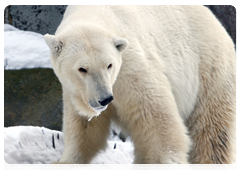 +
+
polar bear
 +
+
polar bear
 +
+
polar bear
 +
+
polar bear
 +
+
polar bear
 +
+
polar bear
 +
+
polar bear
 +
+
polar bear
 +
+
polar bear
 +
+
polar bear
 +
+
WWF Polar Bear Patrol at work on Russia’s east coast
 +
+
WWF Polar Bear Patrol at work on Russia’s east coast
 +
+
The bear cub Ayon was saved by the Polar Bear Patrol in 2011
 +
+
A polar bear on the observation site of the Vaygach polar station
 +
+
A polar bear on the East Siberian Sea shore
 +
+
A polar bear on the East Siberian Sea shore
 +
+
A polar bear on the East Siberian Sea shore
 +
+
In the summer of 2014, polar bears used to stalk the Fyodorov Polar Station
 +
+
In the summer of 2014, polar bears used to stalk the Fyodorov Polar Station
 +
+
In the summer of 2014, polar bears used to stalk the Fyodorov Polar Station
 +
+
Milana in the Volokolamsk sanctuary of the Moscow zoo
 +
+
Milana in the Volokolamsk sanctuary of the Moscow zoo
 +
+
Milana in the Volokolamsk sanctuary of the Moscow zoo
 +
+
Milana in the Volokolamsk sanctuary of the Moscow zoo
 +
+
Milana in the Volokolamsk sanctuary of the Moscow zoo
 +
+
Milana in the Volokolamsk sanctuary of the Moscow zoo
 +
+
Ayon in the Volokolamsk sanctuary of the Moscow zoo
 +
+
Ayon in the Volokolamsk sanctuary of the Moscow zoo
 +
+
Ayon in the Volokolamsk sanctuary of the Moscow zoo
 +
+
Ayon in the Volokolamsk sanctuary of the Moscow zoo
 +
+
Ayon in the Volokolamsk sanctuary of the Moscow zoo
 +
+
Ayon in the Volokolamsk sanctuary of the Moscow zoo
 +
+
During pregnancy, a female bear has to hunt for food because she needs to double her weight
 +
+
Polar bears do not hibernate; only pregnant females lie in the den
 +
+
A female polar bear does not give birth to more than five cubs in the course of her life
 +
+
A female bear’s pregnancy lasts 230–240 days, after which she gives birth to tiny bear cubs weighing 400–750 g
 +
+
Polar bears are considered among the most caring and dedicated mothers in the animal kingdom
 +
+
Newborn bear cubs need round-the-clock care
 +
+
A mother takes care of her cubs for two years until they reach maturity